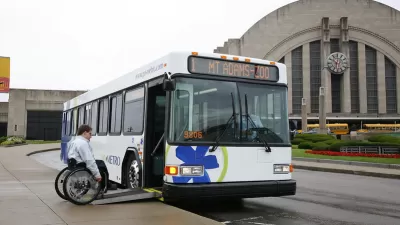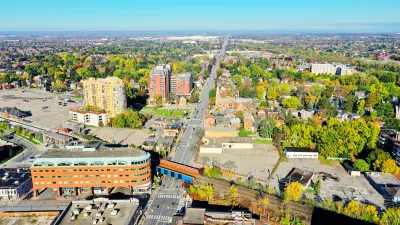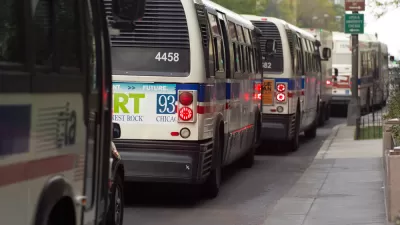Even before the effects fo the coronavirus pandemic drastically reduced ridership, transit riders were declining in cities across the country. The reasons for the downward trend were varied.

Bus ridership started to drop in 2013 in many U.S. cities of all sizes and with different kinds of transit systems. "By late 2019, through nearly seven straight years of decline, national bus ridership in America was at its lowest level since the mid-1970s, a trend that has left service already weakened as transit agencies brace for a public health crisis," write Emily Badger and Quoctrung Bui.
This trend is the result of a variety of factors, say Badger and Bui, including the rise of alternative transportation modes, demographic shifts, and changes in work and commute patterns.
Some factors are under the control of transit agencies—service and infrastructure expansions or cuts, for example. But other factors are related to broader social and economic trends that affect bus ridership over the long term, such as suburbanization, online commerce, and immigration.
"Agencies [also] don’t control all the infrastructure and subsidies that help transit’s biggest competitor, the car. Past research has suggested that transit riders are even more sensitive to changes in gas prices than they are to changes in transit fares. Recently gas has been cheap, and interest rates on auto loans low," note Badger and Bui.
FULL STORY: The Mystery of the Missing Bus Riders

Maui's Vacation Rental Debate Turns Ugly
Verbal attacks, misinformation campaigns and fistfights plague a high-stakes debate to convert thousands of vacation rentals into long-term housing.

Planetizen Federal Action Tracker
A weekly monitor of how Trump’s orders and actions are impacting planners and planning in America.

In Urban Planning, AI Prompting Could be the New Design Thinking
Creativity has long been key to great urban design. What if we see AI as our new creative partner?

King County Supportive Housing Program Offers Hope for Unhoused Residents
The county is taking a ‘Housing First’ approach that prioritizes getting people into housing, then offering wraparound supportive services.

Researchers Use AI to Get Clearer Picture of US Housing
Analysts are using artificial intelligence to supercharge their research by allowing them to comb through data faster. Though these AI tools can be error prone, they save time and housing researchers are optimistic about the future.

Making Shared Micromobility More Inclusive
Cities and shared mobility system operators can do more to include people with disabilities in planning and operations, per a new report.
Urban Design for Planners 1: Software Tools
This six-course series explores essential urban design concepts using open source software and equips planners with the tools they need to participate fully in the urban design process.
Planning for Universal Design
Learn the tools for implementing Universal Design in planning regulations.
planning NEXT
Appalachian Highlands Housing Partners
Mpact (founded as Rail~Volution)
City of Camden Redevelopment Agency
City of Astoria
City of Portland
City of Laramie





























